Little is certain in Afghanistan — armies invade and retreat, governments rise and fall — but when the key of a Toyota Corolla turns in the ignition, the engine can be relied upon to roar to life.
A humble Japanese runabout with a reliable albeit unglamorous reputation, the Toyota Corolla is said to be the world’s most popular car, with more than 50 million trundling off production lines since 1966.
Sturdy, uncomplicated and affordable, it is finely tuned for a nation where roads dissolve into punishing terrain, repairs rely on frayed supply chains and a “make do” mentality has emerged from decades of hardship.
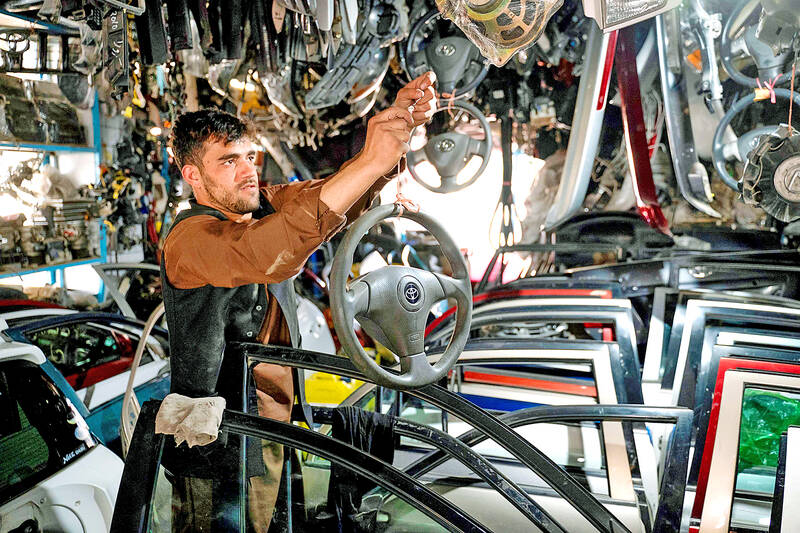
Photo: AFP
“These cars have always been there for people,” mechanic Mohammad Aman said. “If you travel with these cars, they can take you anywhere.”
“The Corolla is quick, their metal is bold, they work well,” the 50-year-old said.
Other cars “are flimsy like paper” by comparison, he added.
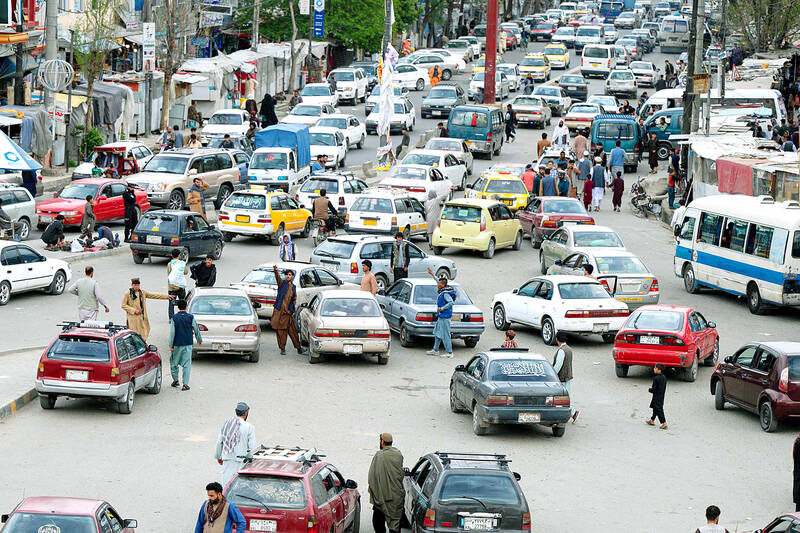
Photo: AFP
In Afghanistan, Corollas are virtually ubiquitous.
Fleets of the suburban mainstay sell on forecourts overlooked by rusted Soviet troop carriers. Corolla taxis with pummeled bodywork jounce past Humvees immobilized since US forces withdrew in 2021. Even hauling up a mountain in a 4X4 one might be overtaken by a careening Corolla driver.
Afghans everywhere emblazon their vehicles with English-language tributes romanticizing the brand: “Happiness is a Toyota feeling,” “Toyota sets the standard” and “Beautiful Corolla” have become the unofficial slogans of Kabul’s grinding traffic jams.
Corollas flooded Afghanistan after the withdrawal of Soviet forces in 1989 and the subsequent collapse of the Soviet Union, before which Moscow’s state-owned Lada brand dominated the market. They have had a background role in national history ever since.
When Washington launched airstrikes after the Sept. 11, 2001, attacks, Taliban founder Mullah Omar fled his Kandahar hideaway in a white Corolla.
It was buried in 2001, but triumphantly excavated last year “still in good condition,” a Taliban government spokesman said, adding that it should be publicly displayed as a “great historical monument.”
Over the Taliban’s 20-year insurgency, the Corolla became the vehicle of choice for car bombers.
Expendably cheap and camouflaged in plain sight, they were packed with explosives and rammed into targets with devastating effect.
Last year, after American forces had pulled out, Taliban authorities boasted about a new Afghan-designed sports car: a supposed symbol of progress.
Yet under its sleek, aerodynamic exterior were the mechanical innards of a modest Corolla.
Everywhere, sprawling families cram into the vehicle, with passengers far outnumbering seats.
“In other countries everything is used in the way it’s intended, but in Afghanistan people don’t care much about such standards,” auto dealer Azizullah Nazari said.
The 39-year-old has sold imported Corollas to suit any budget — US$1,500 to US$14,000 — and many seem to have taken a circuitous route to the country.
He points to a pristine white model apparently originating from Canada. Its interior is lined with South Korean newspapers and it has a Ghanaian number plate. Another has a bumper sticker from a US university; one more has the incongruous coat of arms of a district in central Germany.
Yet all of them have ended up in Afghanistan, where “people have a special craze for Toyota,” Nazar said.
Such is Afghans’ faith in the vehicle that the capital’s largest repair market is not served by paved roads. Shuhada-e Salehin is a jungle of interchangeable spare parts where Corollas are praised for their workaday dependability.
“Some people’s rides are simple, but some have a passion for making them fancy,” Aman said.
Begrimed with engine grease, his colleagues peer under the hood of an impossibly battered 1991 wagon — its paintwork cracked like a dry riverbed, the back wheel chocked with a stone, a peeling “fantastic Corolla” decal stuck to the window.
Out in Kabul’s afternoon traffic, 27-year-old cab driver Naqeebullah pilots a sun-bleached Corolla three years his senior as he scouts for fares.
He estimates 80 percent of vehicles on the road match his.
“All cars have failed to show results apart from the Toyota Corolla,” he said.
Swaying from his rearview mirror is a prayer card.
“Glorified be the one who has made this means of transport subservient to us,” it reads.
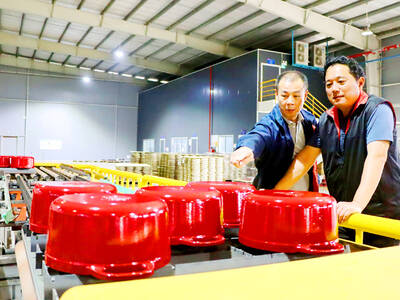
TAKING STOCK: A Taiwanese cookware firm in Vietnam urged customers to assess inventory or place orders early so shipments can reach the US while tariffs are paused Taiwanese businesses in Vietnam are exploring alternatives after the White House imposed a 46 percent import duty on Vietnamese goods, following US President Donald Trump’s announcement of “reciprocal” tariffs on the US’ trading partners. Lo Shih-liang (羅世良), chairman of Brico Industry Co (裕茂工業), a Taiwanese company that manufactures cast iron cookware and stove components in Vietnam, said that more than 40 percent of his business was tied to the US market, describing the constant US policy shifts as an emotional roller coaster. “I work during the day and stay up all night watching the news. I’ve been following US news until 3am
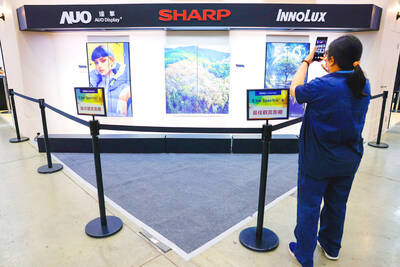
UNCERTAINTY: Innolux activated a stringent supply chain management mechanism, as it did during the COVID-19 pandemic, to ensure optimal inventory levels for customers Flat-panel display makers AUO Corp (友達) and Innolux Corp (群創) yesterday said that about 12 to 20 percent of their display business is at risk of potential US tariffs and that they would relocate production or shipment destinations to mitigate the levies’ effects. US tariffs would have a direct impact of US$200 million on AUO’s revenue, company chairman Paul Peng (彭雙浪) told reporters on the sidelines of the Touch Taiwan trade show in Taipei yesterday. That would make up about 12 percent of the company’s overall revenue. To cope with the tariff uncertainty, AUO plans to allocate its production to manufacturing facilities in
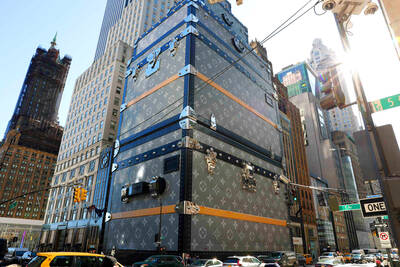
Six years ago, LVMH’s billionaire CEO Bernard Arnault and US President Donald Trump cut the blue ribbon on a factory in rural Texas that would make designer handbags for Louis Vuitton, one of the world’s best-known luxury brands. However, since the high-profile opening, the factory has faced a host of problems limiting production, 11 former Louis Vuitton employees said. The site has consistently ranked among the worst-performing for Louis Vuitton globally, “significantly” underperforming other facilities, said three former Louis Vuitton workers and a senior industry source, who cited internal rankings shared with staff. The plant’s problems — which have not
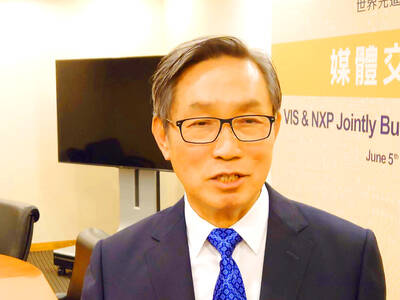
TARIFF CONCERNS: The chipmaker cited global uncertainty from US tariffs and a weakening economic outlook, but said its Singapore expansion remains on track Vanguard International Semiconductor Corp (世界先進), a foundry service provider specializing in producing power management and display driver chips, yesterday withdrew its full-year revenue projection of moderate growth for this year, as escalating US tariff tensions raised uncertainty and concern about a potential economic recession. The Hsinchu-based chipmaker in February said revenues this year would grow mildly from last year based on improving supply chain inventory levels and market demand. At the time, it also anticipated gradual quarter revenue growth. However, the US’ sweeping tariff policy has upended the industry’s supply chains and weakened economic prospects for the world economy, it said. “Now